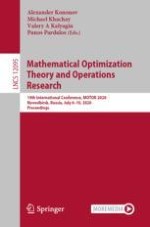2020 | OriginalPaper | Chapter
Optimization of Gain in Symmetrized Itakura-Saito Discrimination for Pronunciation Learning
Authors : Andrey V. Savchenko, Vladimir V. Savchenko, Lyudmila V. Savchenko
Published in: Mathematical Optimization Theory and Operations Research
Publisher: Springer International Publishing
Activate our intelligent search to find suitable subject content or patents.
Select sections of text to find matching patents with Artificial Intelligence. powered by
Select sections of text to find additional relevant content using AI-assisted search. powered by
